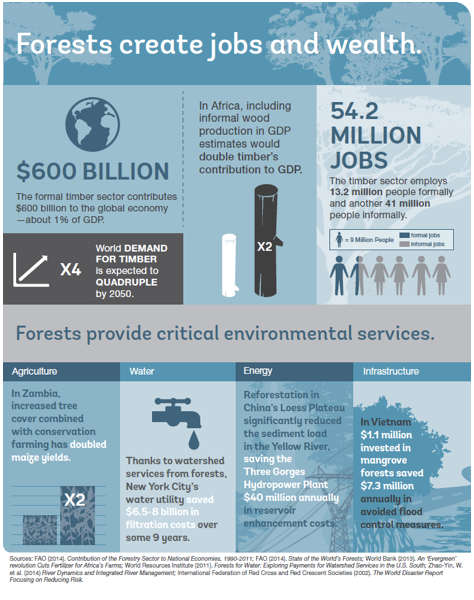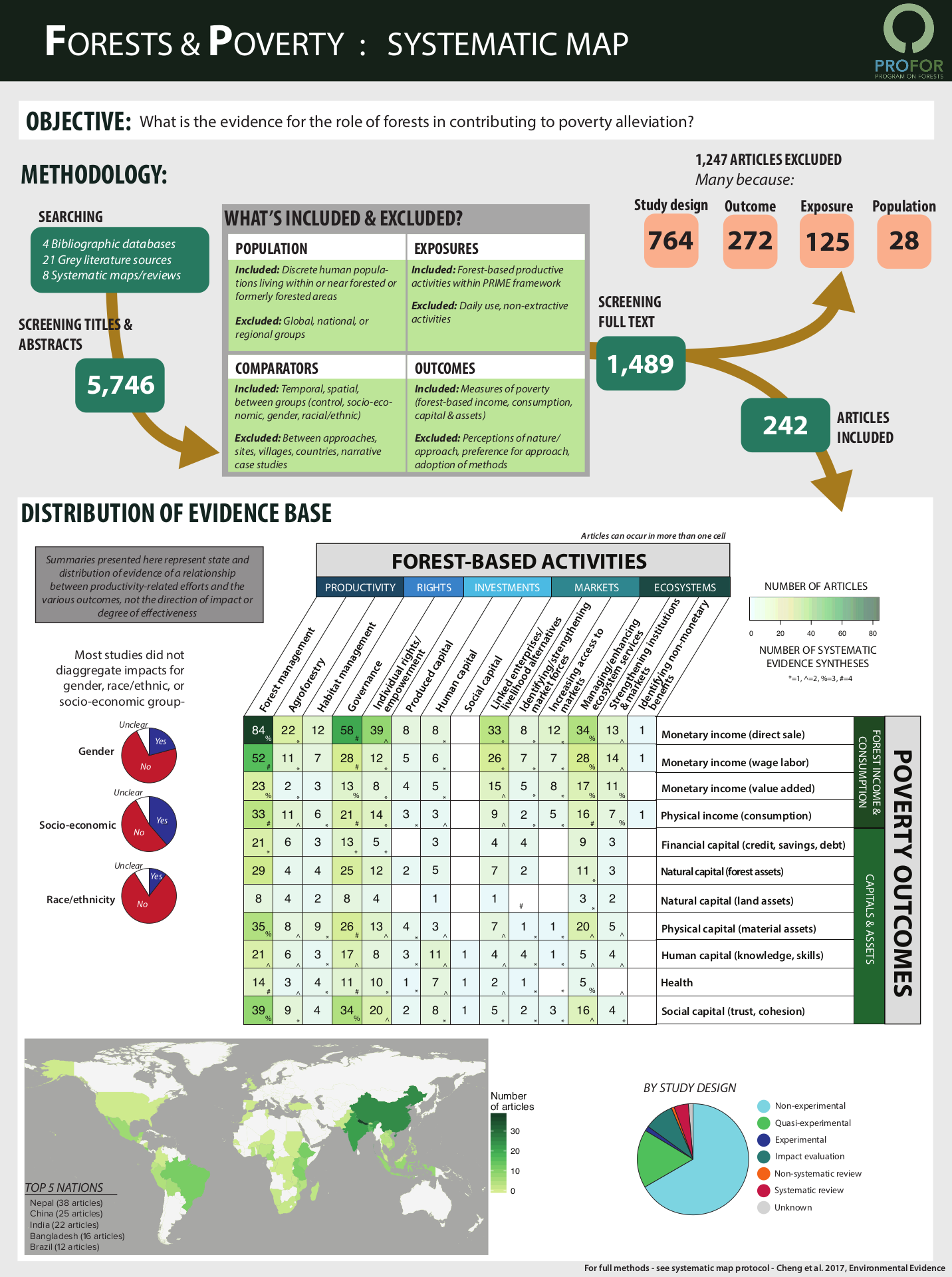Background
The Forests and Poverty program of the program on Forests (PROFOR) at the World Bank intends to analyze how forests can provide a pathway out of poverty, emphasizing the need for robust evidence on this contribution and the critical role gender plays in accessing, using and managing forest and tree resources.
This e-book illustrates the following primary components programmatic activity:
- A knowledge assessment of forest-poverty linkages, including development of an evidence map of literature exploring these linkages and a portfolio review of World Bank forestry-related projects;
- An analytical framework (PRIME) that conceptualizes the multiple ways forests contribute to poverty reduction;
- Case studies developed to explore the different pathways to prosperity in line with PRIME framework; and
- Tools related to the assessment of the linkages between forests and poverty.
The e-book both consolidates information about the Forests-Poverty Programmatic Activity, and brings to life the PRIME framework, which conceptualizes the multiple ways forests contribute to poverty reduction and inform interventions in forest landscapes. The intended audience of this e-book are all actors working in this field: World Bank Group (WBG) and other multilateral development agencies, staff, government officials, donors, and other development practitioners and decision makers.

Knowledge assessment
Results from a systematic map of available evidence on poverty alleviation in forested areas showed that the bulk of evidence in this area is around impacts of activities aimed at improving productivity (P) and securing rights (R). Specifically, many studies examined either forest management or governance, or projects/programs that contained elements of both. A first assessment of the articles included in the evidence map showed that governance and forest management have great linkages to welfare outcomes, but also that there is a significant skew towards measuring change in poverty through changes in monetary income, with an emphasis on cash income obtained from direct sale of forest goods.
A review of the World Bank’s forestry portfolio proved the PRIME framework to be an effective way of describing a number of key features of WBG projects and their complementarity. Results from the review showed that the World Bank Group (WBG) had implemented forestry investments in 309 projects from 2002 to 2015. Across all these projects, 88 had finished a full project cycle. Our assessment of 38 of these projects show that the average amount spent in loans or grants was about US$ 38 million. The main recipient countries were in the East Asia and Pacific region and/or classified as lower-middle and upper-middle income countries. The portfolio review showed that the most common PRIME theme in the portfolio sample was complementary investments (I), which featured in 71% of the projects.

Analytical Framework
To provide a clear structure for research and studies around poverty alleviation in forested areas, the PRIME framework was developed. PRIME identifies five broad pathways that can help launch the forest-dependent poor onto a sustainable path toward prosperity: (a) improvements of productivity f forest land and labor; (b) strengthened community, household and women’s rights (R) over forests and land; (c) regional complementary investments in institutions, infrastructure, and public services that facilitate forest resource use; (d) increased access to markets (M) for timber or NTFPs; and (e) mechanisms that enhance and enable the flow of benefits from forest ecosystem services (E) to the poor. These pathways identify economic development strategies and build on the premise that forests themselves will remain intact.

Country studies
Original country studies have been developed to explore the different pathways to prosperity in line with the PRIME framework. These studies look at the availability of forests to support food/fuel/medical and water needs (subsistence) and to cope with natural or economic disasters, at the role of forest to accumulate assets, and at forest community coordination, among other things. Cases studies were undertaken in the Philippines, Georgia and Turkey, and in Africa. Additional case studies are expected in Argentina and Armenia.

Tools for knowledge development
The program has supported the development of the Forestry Modules to the standard Living Standard Measurement Survey (LSMS). The Forestry Modules provide very detailed questions on forest households and communities that could be either used as standalone questionnaires or embedded into a large-scale household survey. These Modules have been and are currently being used in Turkey, Georgia, Armenia, Sao Tome and Principe, among others.
In addition, a high-frequency survey tool on forests and poverty, Forest-SWIFT has been developed to promote and facilitate data collection on forest dependence and poverty. Forest-SWIFT is a cost-effective way to measure forest dependence and poverty, and facilitates monitoring and evaluation of projects.
Similarly, to promote and facilitate the integration of gender aspects into projects and programs, a guide describing a range of tools and approaches for analyzing gender in assessments of the contribution of forest to poverty has been developed.